Wondering if a peanut is a fruit or a vegetable? You’re not alone. Despite their name, peanuts aren’t true nuts. They belong to a fascinating category that blurs the lines between fruits and vegetables.
In this guide, I’ll dive into the botanical classification of peanuts. You’ll learn why peanuts are considered fruits, their unique growth process, and how they differ from other nuts. I’ll also explore their nutrient profile and health benefits.
Curious about what makes peanuts so special? Keep reading to uncover the surprising truth about these underground wonders!
- Related article: Differentiating Fruits and Vegetables
5 Key Takeaways on Is Peanut a Fruit or Vegetable
- Peanuts belong to the pea family, so they are classified as legumes. This means they are fruits, not vegetables.
- Peanuts have a nutrient profile similar to other nuts. They contain healthy fats, proteins, vitamins, and minerals. They are rich in monounsaturated and polyunsaturated fats, plant-based protein, and essential nutrients like vitamin E, B vitamins, magnesium, phosphorus, and potassium.
- Peanuts grow underground through a process called geocarpy. The plant’s flowers grow a tube that reaches into the soil. This tube forms pods where the peanuts develop.
- Even though we call them nuts, peanuts are seeds. They are grouped with nuts for cooking, but they are not true nuts. True nuts are dry fruits with a hard ovary wall.
- Eating peanuts has health benefits. They can help your heart, manage your weight, stabilize blood sugar, and might reduce cancer risk. But peanuts also have risks. They can cause digestive issues and allergic reactions.
Is Peanut a Fruit or Vegetable?
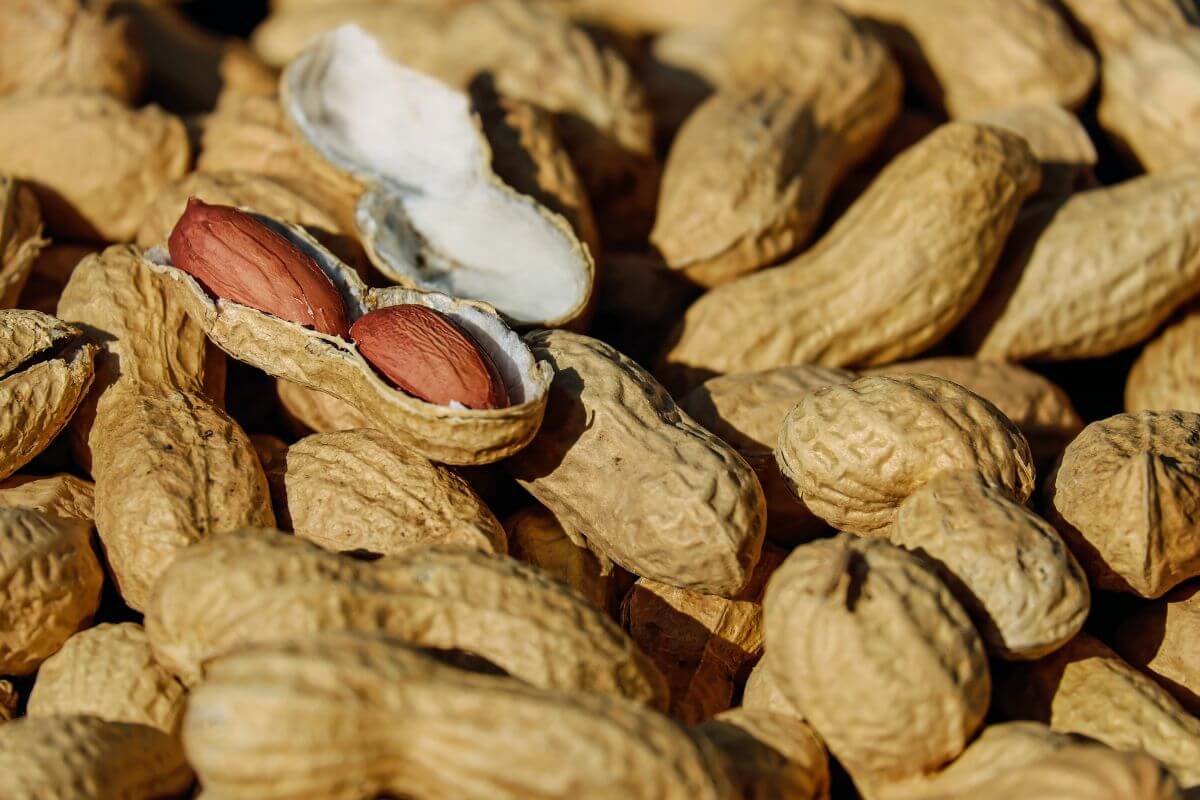
You might think a peanut is just another nut, but it’s a bit more complex. Botanically, peanuts are classified as fruits, specifically legumes. They are not vegetables. They belong to the pea family known as Fabaceae. Their scientific name is Arachis hypogaea.
Peanuts share a nutrient profile with other nuts. But most nuts, like acorns, chestnuts, and hazelnuts, are seeds of a fruit. This makes them fruits.
Peanuts are different. They produce seeds underground. This unique trait allows them to be classified as both vegetables and fruits. Plus, their oil content and peanut pods add to their distinctiveness.
Why Is Peanut a Fruit?
Let’s dig into why peanuts are fruits. It’s a nutty idea, right? But it’s true!
Peanuts come from plants with pretty yellow flowers. These flowers have five petals and nine little stamens at the bottom. They don’t need bees or butterflies to make baby peanuts. They do it all by themselves!
After the flowers do their thing, something cool happens. The plant grows a tube that reaches down into the soil. This tube becomes a pod, and inside that pod, the peanut starts to grow.
Here’s where it gets weird. The peanut grows sideways, parallel to the ground. It’s like it’s lying down for a nap!
You know those peanuts you munch on? Those are the seeds. You can plant them to grow new peanut plants too.
But wait, there’s more! This whole process has a fancy name: geocarpy. It’s how the peanut plant makes flowers above ground but grows its seeds below.
Peanuts are fruits because they have seeds inside a hard shell. That shell doesn’t pop open when it’s ripe. It’s like a stubborn little house for the peanut.
Did you know South Africa is big on peanut production? They grow tons of these underground fruits!
So next time you crack open a peanut, remember: you’re eating a fruit that grew underground.
Is a Peanut a Nut?
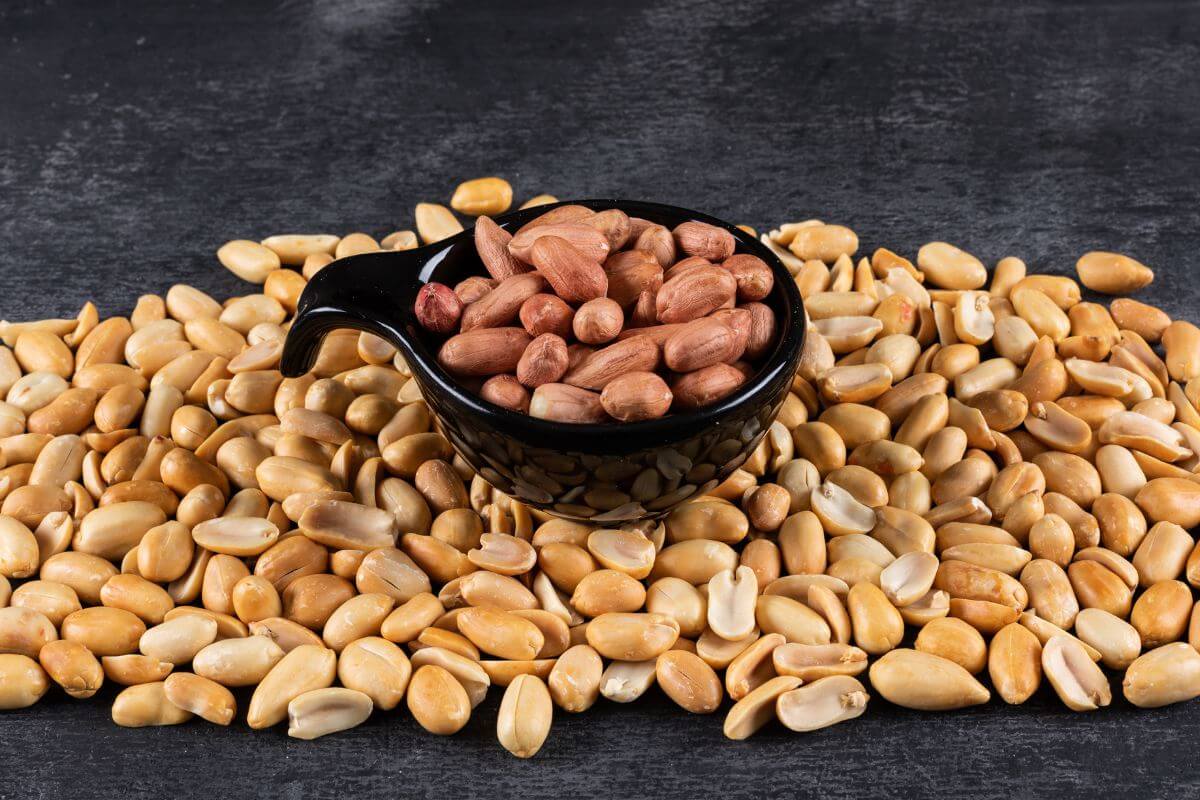
Peanuts taste and look like tree nuts such as almonds and walnuts. But they are not true nuts. Botanically, a nut is a dry fruit with an ovary wall that hardens as it matures. So, peanuts do not fit this definition.
Peanuts are actually seeds. They are grouped with nuts mainly for cooking purposes.
Let’s go over the reasons why peanuts aren’t actual nuts:
- A nut is a single-seed fruit with a hard shell. A peanut is a seed.
- Nuts have single seeds in hard shells. Peanut shells are not hard and contain 2 to 3 seeds.
- Nut seeds are open inside hard shells. Peanuts have a thin, paper-like, reddish covering that is inedible.
So, scientifically speaking, peanuts are seeds, not nuts. This applies whether you are talking about roasted peanuts or coated peanuts. Peanut production treats them as seeds too.
Why Are Peanuts Legumes?
Legumes belong to the family of plants known as Fabaceae, Leguminosae, pea, or bean family. We also call them pods. Most legumes are dehiscent fruits. They release their seeds by splitting open when ripe. The split happens along two seams.
Raw peanuts are an exception because they do not open naturally. You must open the hard shell yourself.
Legumes come in various shapes and sizes. Many have an elongated form with seeds in a single line. When they mature, they become hard, dry, papery, or woody. Some, like peas and green beans, are harvested while still green.
Legumes have nitrogen-fixing bacteria in their root nodes. Bacteria like Nitrosomonas or Azotobacter convert nitrogen into nitrites and nitrates. This helps plant growth. Peas, peanuts, and lentils all have these bacteria, making them legumes.
Peanuts Are Also Groundnuts
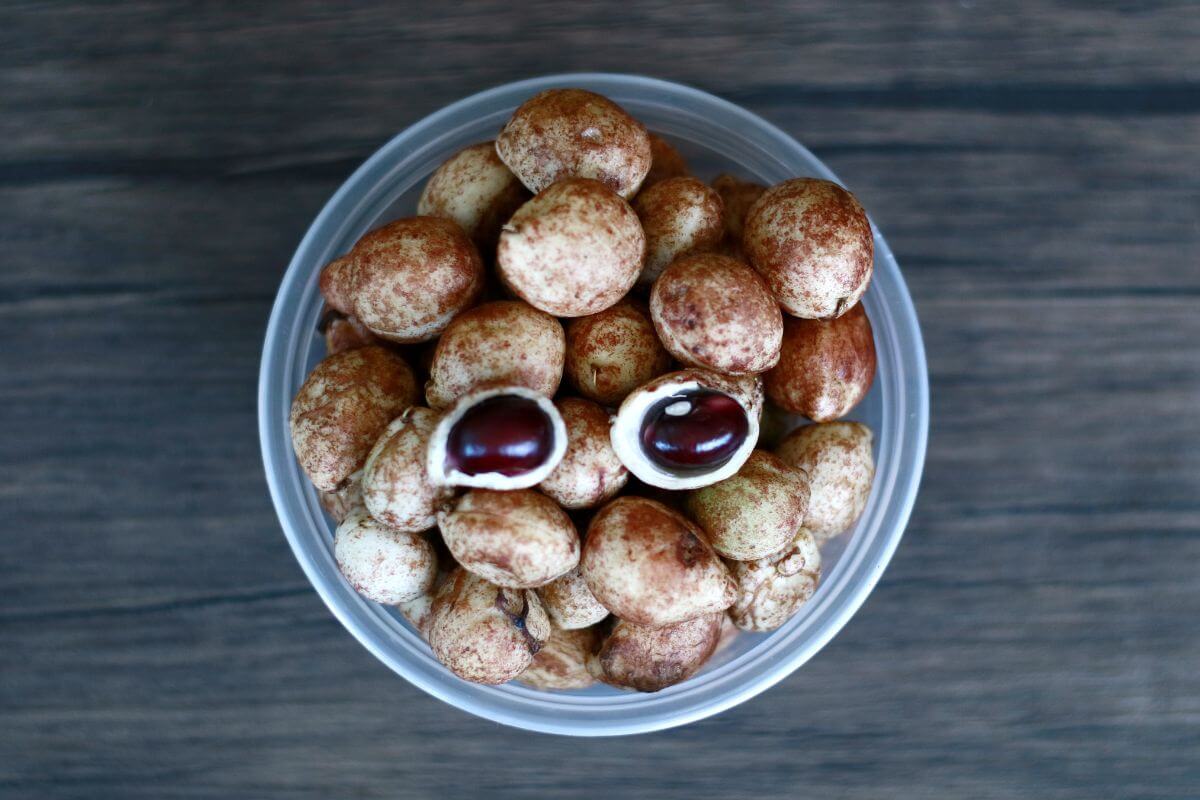
Peanuts, often called “groundnuts,” are unique because they grow underground. This name reflects their growth habit. Let’s explore what makes groundnuts special.
Groundnuts are peanuts (Arachis hypogaea). Unlike most nuts that grow on trees, peanuts develop in pods underground after pollination.
Interestingly, “groundnut” can refer to other plants too:
- Bambara groundnut (Vigna subterranean) – A legume from Africa that also grows underground.
- Apios americana – A North American vine known as “American groundnut,” which has edible tubers.
Peanuts, or groundnuts, are versatile. You can enjoy them in many ways:
- Snacks – Roasted or boiled farm-fresh harvested peanuts are popular.
- Condiments – Peanut butter is a favorite spread.
- Dishes – They improve sauces, stews, and desserts in many cuisines.
Groundnuts are not just tasty. They are an essential edible seed in various culinary applications.
What Are the Different Types of Nuts?
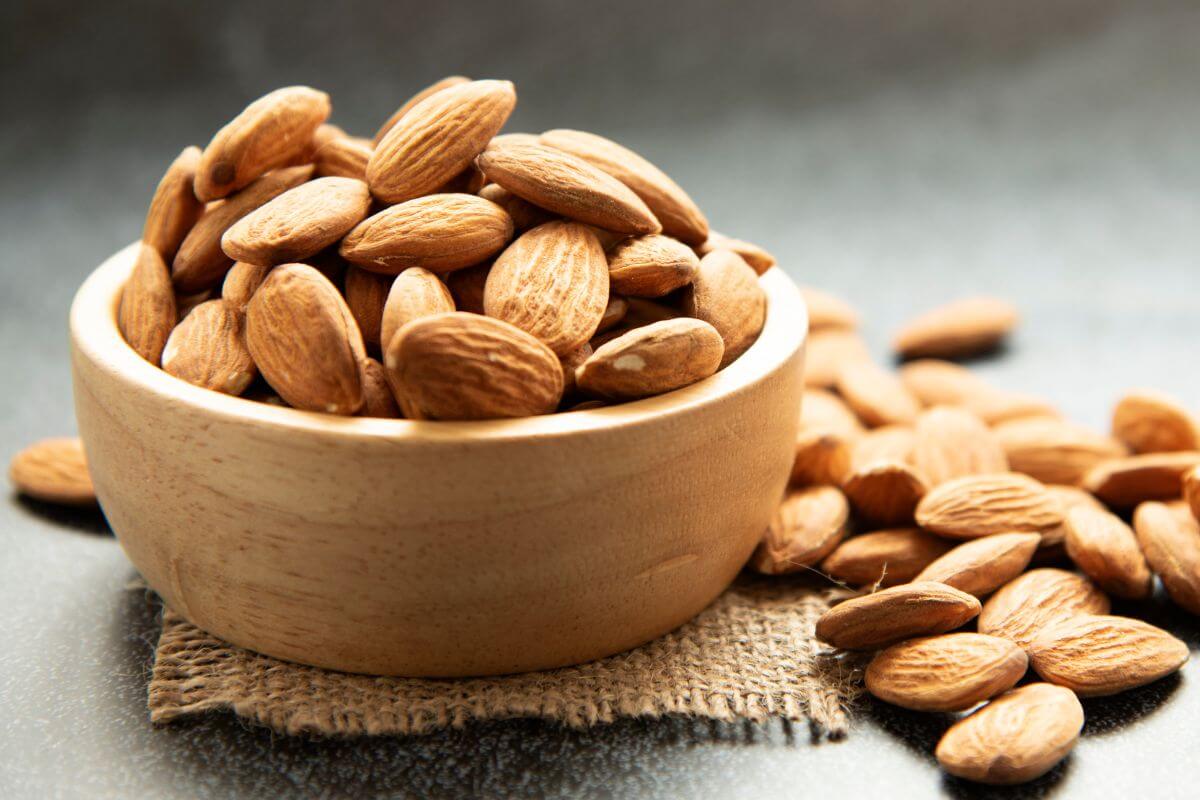
There are many types of nuts, each with its own flavor, texture, and use in cooking. Here’s a quick look at some common ones:
- Almonds – You can get these whole, sliced, or as flour. They taste mildly sweet and are packed with vitamin E.
- Cashews – These have a creamy texture and are popular in vegan recipes and snacks.
- Walnuts – They have a rich, slightly bitter taste and are full of omega-3 fatty acids.
- Pecans – Sweet and buttery, pecans are a favorite in desserts like pecan pie.
- Hazelnuts – Also called filberts, they have a sweet, rich flavor and are often used in chocolates and spreads.
- Pistachios – These green nuts are usually roasted and salted. They have a unique flavor.
- Macadamia Nuts – Rich and buttery, macadamias are common in cookies and desserts.
- Brazil Nuts – These are large and creamy. They are a great source of selenium.
- Pine Nuts – Small and sweet, pine nuts are often used in pesto and salads.
Though technically legumes, peanuts are often called nuts. They are high in protein and come in many forms like roasted peanuts, coated peanuts, Spanish peanuts, dry peanuts, and plain peanut butter.
What Are the Health Benefits of Peanuts?
You might not realize it, but peanuts are packed with benefits.
- Rich in Healthy Fats – Peanuts contain monounsaturated and polyunsaturated fats that help reduce bad cholesterol and lower the risk of heart disease.
- High in Plant-Based Protein – Peanuts provide a substantial amount of plant-based protein, making them ideal for vegetarians and vegans. They contain all 20 amino acids, including arginine, which boosts immune function.
- Packed With Essential Nutrients – Peanuts are packed with essential vitamins and minerals, such as vitamin E, B vitamins (thiamine and niacin), magnesium, phosphorus, and potassium, which support various body functions.
- Aid in Weight Management – Despite being calorie-dense, the fiber and protein content in peanuts promotes satiety, helping to control overall calorie intake.
- Support Heart Health – Regular consumption of peanuts can reduce the risk of coronary heart disease due to their antioxidants like resveratrol, which reduce inflammation and improve cholesterol levels.
- Support Bone Health – Peanuts provide magnesium and phosphorus, which are essential for strong bones.
- Potential Cancer Risk Reduction – Some studies suggest that eating peanuts may lower the risk of certain cancers, including breast cancer in women.
- Boost Immune Response – The protein and nutrients in peanuts can enhance immune function, making them beneficial for overall health.
- Stabilize Blood Sugar Levels – The mix of protein, fiber, and healthy fats in peanuts can help stabilize blood sugar levels, making them a good option for people with diabetes or those at risk of it.
Different Ways to Add Nuts to Your Diet
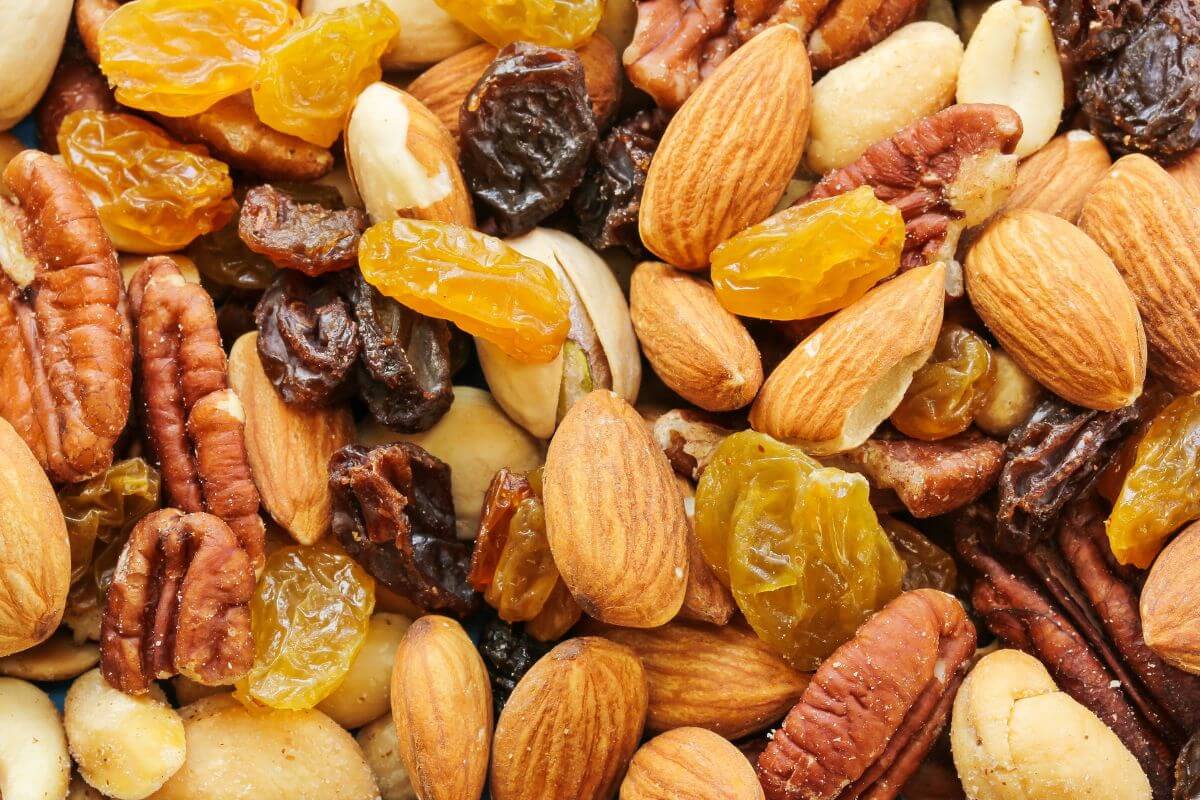
You can add nuts to your meals in many creative ways to boost flavor and nutrition. Here are some effective methods:
For breakfast, try these ideas:
- Make a Nutty Breakfast Parfait. Layer Greek yogurt with fresh fruits and sprinkle chopped nuts like almonds or walnuts on top.
- Add chopped nuts like pecans or walnuts to your cereal or oatmeal for extra crunch and nutrition.
For snacks, consider these options:
- Create a custom trail mix. Combine various nuts with dried fruits and a bit of dark chocolate for an easy snack.
- Spread nut butter, like almond or peanut butter, on whole-grain toast or mix it into smoothies for added protein and healthy fats.
For salads and sides, try these tips:
- Toss a handful of toasted nuts, such as pine nuts or pecans, into salads for extra crunch and nutrients.
- Use crushed nuts to make a crunchy coating for proteins like chicken or fish instead of breadcrumbs.
For main dishes, consider these ideas:
- Add cashews or peanuts to vegetable stir-fries for extra texture and protein.
- Make a Nutty Pesto. Substitute some basil with nuts like walnuts or pine nuts for a flavorful twist.
For desserts, try these options:
- Top baked fruit desserts with a mix of chopped nuts, oats, and a drizzle of honey for a healthier crumble topping.
- Combine chopped nuts with dates and dried fruits to create no-bake energy bites, perfect for a quick and nutritious treat.
These tips can help you enjoy the benefits of nuts in your meals. Whether you’re making a chicken in peanut sauce or a sweet peanut treat, nuts add flavor and nutrition. Their oil content also brings healthy fats to your diet.
What Are the Potential Risks of Including Nuts in Your Diet?
Eating nuts can be great for your health. But you should be aware of some risks.
- Digestive Issues – Overconsumption of nuts can lead to stomach problems such as nausea, vomiting, diarrhea, constipation, bloating, gas, stomach pain, or indigestion.
- Allergic Reactions – Nuts can cause allergic reactions in some people, including hives, itching, swelling, difficulty breathing, wheezing, or chest tightness.
If you think you have a food allergy, see your doctor. If it’s urgent, go to the emergency room right away.
Is Peanut a Fruit or Vegetable? Final Thoughts
Peanuts pack a nutritional punch. They’re not veggies but legumes and fruits. Want to spice up your meals? Peanuts might be your answer.
Why not give peanuts a shot? Start small. Munch on an ounce of raw peanuts daily. It’s easy to work them into your routine. Over time you can bump it up. Aim for four servings of nuts each week.
Have you tried roasted peanuts before? They’re crunchy and flavorful. Plus they’re versatile. You can eat them plain or use them in cooking. How will you add peanuts to your diet?
Is Peanut a Fruit or Vegetable FAQs
1. What Is a Peanut Classified As?
Peanuts may have the word “nut” in their name, but they are actually legumes. This is because peanuts are edible seeds that grow in pods, just like other legumes.
2. What Food Group Is a Peanut In?
Peanuts belong to the protein food group. Apart from being rich in protein, they are also packed with other essential nutrients. This makes them a valuable part of a balanced diet.
3. Why Is Groundnut Considered a Fruit?
Peanuts are known as groundnuts and are classified as fruits because they develop underground from the plant’s roots.
You may be interested in learning more about these different edible plants to see if they’re considered a fruit or vegetable:

